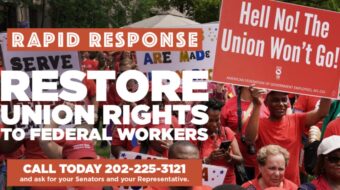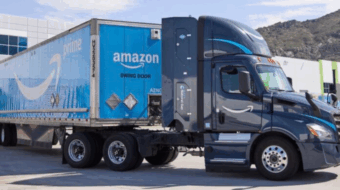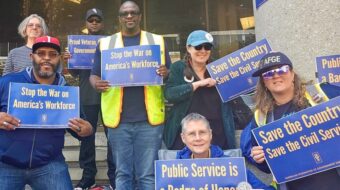
Build the fight for jobs – Part 3
Third in a series of three articles
Rick Nagin also co-authored this series.
Aside from “supply-side economics,” the other pillar of right-wing corporate ideology is the false claim that “the government can’t do anything successfully” or that “the government is not the solution – it’s the problem.”
We need to show that the American people through their struggles have established the basic institutions of democratic society including Social Security, Medicare, Medicaid, the Postal Service, safety and municipal services, the Veterans Administration, the federal highway system, the public schools, colleges, libraries and transit systems, the Equal Employment Opportunities Commission, the federal and state parks, the Food and Drug Administration, the Consumer Product Safety Commission, the Centers for Disease Control, the Occupational Safety and Health Administration, NASA, the National Institutes of Health, the National Science Foundation etc, etc. When we bring these facts to light, we can help people understand that the “government is bad” idea is dead wrong.
One underlying factor in the anti-government ideology is racism – the idea that government programs primarily benefit racially oppressed minorities, but are paid for by white taxpayers. The fact is, government programs benefit and are paid for by all races and ethnic groups.
The claim is also made that jobs programs are unaffordable and will only increase the deficit. Of course, this claim is never made when it comes to military spending, which puts no goods in circulation, or for the bailout of the banks, which created no jobs. Nor is it made with regard to the huge increase in the deficit brought on by the Bush administration’s massive tax cuts for the rich.
The fact is, after an initial investment, jobs programs will reduce the deficit by reviving the economy, expanding consumer demand for real goods and services and increasing the tax base.
The dominant corporate culture has also promoted the totally false notion that the giant public works projects of the New Deal were merely “make-work” projects that may have put people to work, but produced little of importance. Nothing could be further from the truth.
The New Deal Public Works Administration created huge transformative hydropower projects like the Tennessee Valley Authority and the Grand Coulee Dam that continue today as major nonpolluting providers of electricity.
The Works Projects Administration (WPA), established in 1935, lasted until 1943, when right-wing forces in Congress got it repealed while the U.S. was at war. During its existence the WPA employed over 8.5 million people. African Americans were employed at double their percentage of the U.S. population. WPA workers built or improved over 800 airports, 124,000 bridges and 125,000 public buildings, including schools, hospitals and post offices, and produced over 650,000 miles of roads. The WPA Federal Artists Project employed thousands of artists, writers and musicians, who produced over 10,000 arts projects. Many of these projects were murals that beautified post offices and other public buildings.
“Government has a final responsibility for the welfare of its citizens,” President Franklin D. Roosevelt told Congress in his annual message in 1938. “If private cooperative effort fails to provide work for willing hands and relief for the unfortunate, those suffering hardship through no fault of their own have a right to call upon the government for aid. And a government worthy of the name must make a fitting response.”
Now, just as during the Great Depression, the private sector will not and cannot produce the jobs needed to rebuild our nation’s crumbling infrastructure, and the new green energy projects, and revitalize our nation’s economy. There is simply no market. Working people have been impoverished and cannot buy the goods and services to revitalize the nation. Further, there are not sufficient profit margins for the private sector to shift and take up these badly needed projects. There is no solution without massive, direct intervention of the federal government.
Our fight can win!
The fight for jobs will be a tough one, but one we can and must win if we are to realize the rest of the reform agenda and move to the next level of struggle for a better society.
With the Obama administration and Democratic majorities in Congress a window of opportunity has opened. It is difficult to overestimate the importance of this development. Instead of fighting for our lives, and facing an extremely hostile pro-corporate Republican majority and presidency, for the first time in decades we have potential allies in powerful positions. A strong fight, mobilizing millions, for jobs/relief, can be the catalyst to move the labor-led people’s movement, finally, from the defensive to an offensive program for the progressive change our society so badly needs.
Part 1 of this series: Jobs for America Now can be catalyst for mass action
Part 2: Confronting corporate ideology in the fight for jobs
Photo: http://www.flickr.com/photos/billjacobus1/ / CC BY 2.0











